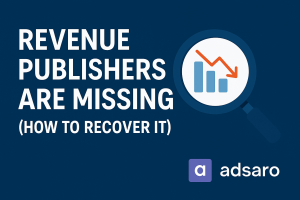In digital advertising, pricing models are the foundation of how advertisers pay for media and how publishers generate revenue. Traditionally, campaigns were priced using models such as CPM (Cost Per Mille), where advertisers pay per thousand impressions; CPC (Cost Per Click), where they pay only when users click on the ad; and CPA (Cost Per Acquisition), where payment is made only when a specific user action—like a sale, form submission, or sign-up—is completed. While each of these models serves a distinct purpose, the advertising landscape has grown more sophisticated. Today, advertisers often pursue multiple goals in a single campaign: building brand awareness, driving website traffic, and achieving conversions. This is where the Hybrid Pricing Model comes into play.
What is a Hybrid Pricing Model?
A Hybrid Pricing Model combines two or more traditional ad pricing methods to create a more flexible, goal-oriented strategy. Rather than being locked into a single performance metric, advertisers and publishers can align their interests across several success points. For example, an advertiser might agree to pay a base rate for impressions (ensuring visibility) and additional fees when those impressions lead to clicks or conversions. This approach ensures that both parties benefit: advertisers get measurable performance, and publishers receive compensation not only for exposure but also for helping drive results.
Common Hybrid Pricing Combinations
The most common combinations in hybrid pricing include CPM + CPA, CPC + CPA, and CPM + CPC. In a CPM + CPA model, the advertiser pays for guaranteed impressions but also offers a payout for each conversion. This blend supports branding while still focusing on measurable outcomes. In a CPC + CPA setup, advertisers cover the cost of user engagement through clicks and reward publishers further when those clicks lead to meaningful actions. The CPM + CPC combo focuses on exposure and engagement, often used when brand recall and traffic are both important. More advanced campaigns may even incorporate all three—CPM, CPC, and CPA—creating a tiered and performance-driven structure tailored to complex marketing funnels.
Advantages of Hybrid Pricing Models
One of the biggest advantages of hybrid pricing is that it allows advertisers to control their budget more efficiently. They can allocate spending across the advertising funnel—from awareness to conversion—ensuring no part of the user journey is neglected. Publishers also benefit significantly. Rather than depending on a single revenue source like CPM, they can generate income through a combination of impressions, user engagement, and results. This diversified structure often leads to better collaboration between advertisers and publishers, especially when both parties are focused on long-term performance and not just short-term gains.
Challenges in Implementing
However, hybrid pricing models also come with complexities. Tracking and attribution become critical, as both parties must rely on accurate data to calculate payments for impressions, clicks, and conversions. This requires integrated analytics and clear attribution methods, especially for CPA components where conversions might occur days after the initial interaction. Additionally, hybrid pricing deals are usually more complex to negotiate. Both parties need to clearly define expectations, performance benchmarks, and payout thresholds to avoid confusion or disputes.
When to Use Hybrid Pricing Models
Despite these challenges, hybrid pricing is particularly useful for campaigns with multiple objectives. For example, an e-commerce brand like ASOS might launch a new clothing line and want to generate brand awareness while also driving conversions. In this case, a hybrid campaign would ensure their ads are seen (CPM), clicked (CPC), and eventually result in purchases (CPA). For instance, ASOS might run display ads showing their latest collection to a broad audience, paying for impressions (CPM). Then, they could use retargeting ads that encourage clicks, paying for each click (CPC). Finally, they’d reward conversions, such as completed purchases, under a CPA structure. The result is a well-balanced strategy that addresses every stage of the customer journey, from awareness to conversion.
The Future of Hybrid Pricing Models
As the digital advertising ecosystem evolves, Hybrid Pricing Models will gain more prominence. Advertisers face growing pressure to deliver measurable results and maximize ROI. This will drive demand for flexible pricing models that cater to various campaign goals. A key aspect of the future will be the integration of AI and machine learning.
These technologies will allow for real-time, dynamic adjustments to hybrid pricing based on performance. Additionally, the rise of privacy-first advertising—and the phase-out of third-party cookies—will lead to new models that balance performance with user data privacy. Advertisers will also push for cross-channel hybrid pricing that integrates multiple platforms such as social media, display ads, and video. Ultimately, the future of hybrid pricing models will center around adaptability, performance-driven outcomes, and seamless integration with emerging technologies.
Conclusion
The Hybrid Pricing Model is a sophisticated approach to digital advertising that meets the diverse goals of modern campaigns. By combining pricing strategies like CPM, CPC, and CPA, it allows advertisers to maximize both reach and performance. Publishers benefit by optimizing revenue at different stages of the user journey.
As technology advances, data privacy regulations evolve, and advertising shifts toward performance-based models, the hybrid model is becoming more important. It bridges the gap between visibility and measurable results.
For both advertisers and publishers, hybrid pricing offers flexibility to adapt to changing market dynamics. It ensures more effective and efficient campaigns. Whether you want to raise brand awareness, drive traffic, or increase conversions, hybrid pricing is a balanced solution. As it continues to grow, it will remain a key strategy in digital advertising, delivering value for both sides.








Leave a Reply